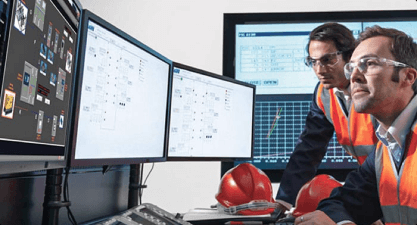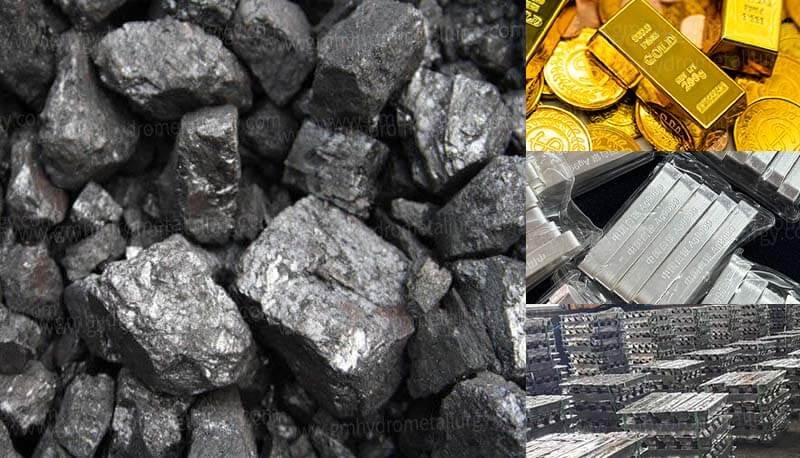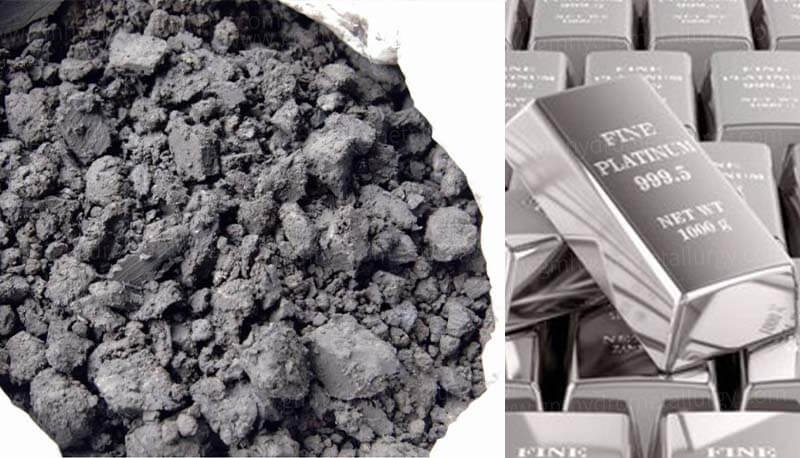Recovery of Waste Electroplating Solutions
Sources of Waste Electroplating Solutions
Waste electroplating solutions are generated during production processes in industries such as papermaking, printing and dyeing, and chemical manufacturing. These include electroplating wastewater from plated component rinsing water, cooling water, and spent electroplating bath solutions. Electroplating wastewater contains hazardous substances such as heavy metal ions and cyanides. Spent electroplating bath solutions refer to the impurity-containing bath liquids generated during electroplating processes.
Waste electroplating solutions typically contain various metal ions, including precious metals such as palladium (Pd), platinum (Pt), and rhodium (Rh).

Palladium

Platinum

Rhodium

Ruthenium
Applications of Platinum Group Metal (PGM) Electroplating
Electroplating platinum group metals (e.g., Pt, Pd, Rh) onto other metal substrates replaces the use of solid PGM components, significantly reducing material consumption. Among these, platinum (Pt), palladium (Pd), and rhodium (Rh) electroplating are more widely applied.
Platinum Electroplating: Initially used for jewelry, tableware, and scientific instruments, it is now extensively applied in chemical industries (e.g., platinum-coated titanium anodes for cathodic protection), electronics, and aerospace.
Palladium Electroplating: Primarily used for electrical contacts, jewelry, watches, and decorative eyeglass frames.
Rhodium Electroplating: Mainly applied in scientific instruments, microscopes, searchlight reflectors, and electrical contact devices.
Composition and Properties of Electroplating Solutions
1. Platinum Electroplating Solutions
Chloroplatinic Acid Bath: Contains H₂PtCl₆ (15–25 g/L) and [HCl] > 1 mol/L.
Alkaline Bath: Contains Na₂Pt(OH)₆ (~18 g/L), Na₂SO₄ (~30 g/L), NaOH (~5 g/L), and Na₂C₂O₄ (sodium oxalate, ~5 g/L).
2. Palladium Electroplating Solutions
Acidic Bath: Contains Pd (~50 g/L, added as PdCl₂), NH₄Cl (~50 g/L), and pH 0.1–0.5.
Weakly Alkaline Bath: Contains Pd (10–40 g/L, added as Pd(NH₃)₂Cl₂), NH₄Cl (~10 g/L), (NH₄)₂SO₄ (~25 g/L), and pH 8.5–9.
3. Ruthenium Electroplating Solutions
Ruthenium Chloride Bath: Contains Ru (~2 g/L, added as RuNOCl₃), and H₂SO₄ (2 mol/L).
Ammonium Sulfamate Bath: Contains Ru (~10 g/L, added as (NH₄)₃N(Ru₂Cl₄H₂O)₂), NH₂SO₃NH₄ (10 g/L), and pH 1.3.
4. Cyanide Molten Salt Electroplating Solutions
Molten salt baths composed of NaCN + KCN mixtures (550–600°C) under argon atmosphere, with dissolved Pt (3 g/L) or Ir (5–6 g/L) for platinum or iridium electroplating.
Recovery Technologies for Waste Electroplating Solutions
Each electroplating solution contains a single PGM species, eliminating the need for inter-metal separation. The weakly acidic or alkaline nature of these solutions makes metal recovery technically straightforward.
1. Displacement Method
Applied to solutions containing Pt, Pd, or Rh. Base metals in the displacement products are dissolved using hydrochloric acid, followed by refining to pure metals for reuse in compound preparation.
2. Absorption Method
Used for Ru- or Os-containing solutions. Oxidizing agents are added to convert Ru/Os into RuO₄ or OsO₄, which are then recovered via distillation-absorption.
3. Ion Exchange
Metal ions in the waste solution are adsorbed using ion-exchange resins, followed by elution and recovery. This method can effectively remove and recover palladium, platinum, and rhodium from the waste solution.
4. Electrolytic Refining
Precious Metal Electrolysis Recovery Equipment utilizing electrolysis principles, metal ions in the waste solution are reduced to metallic form at the cathode for recovery. This method achieves a high recovery efficiency exceeding 99%.
5. Filtration and Purification

Waste electroplating solutions can be treated using online filtration-purification systems or concentration-recovery devices. These technologies reduce hazardous waste disposal costs, enable resource recycling, and lower operating expenses by purifying and reusing the solutions, thereby decreasing the need for fresh electroplating chemicals.
Our Services

Production Flow Diagram
Complimentary provision of production flow diagrams and installation foundation drawings for buyer-required equipment.

Site Layout
Free adjustment services for layout plans during the entire operational process, provided upon buyer request.

Installation Training
During installation and trial operation, our engineers will be dispatched on-site for equipment installation, commissioning, and necessary operational training.

Accessories Supply
A list of wear-prone and consumable parts is provided. Spare parts are sold at factory prices when purchased directly from Guanma Machinery.
Contact Us
Please specify your requirement by referring to the following aspects:
1-What type of precious metal do you want to extract?
2-How many tons raw material do you want to process per kg?
3-When will you want to start this project?
4-How is your budget of machine?
5-Which point that you really focus on?(We have customized service for each client)




